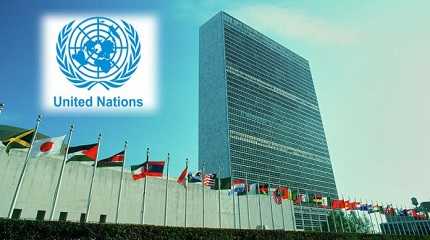
UNITED NATIONS, Mar 05 (APP):After days of marathon negotiations, UN member states Saturday reached a historic agreement on a treaty to protect the high seas — the ocean area beyond the jurisdiction of any country.
The High Seas Treaty, which will cover almost two-thirds of the ocean that lies outside national boundaries, will provide a legal framework for establishing vast marine protected areas (MPAs) to protect against the loss of wildlife and share out the genetic resources of the high seas. It will establish a conference of the parties (COP) that will meet periodically and enable member states to be held to account on issues such as governance and biodiversity.
“The ship has reached the shore,” UN conference president Rena Lee announced after a marathon final day of talks between negotiators from more than 100 countries, as fatigued delegates broke into loud applause.
She thanked delegates for their dedication and commitment. “The success is also yours,” she told the delegates in the room who had not left the conference hall for 48 hours and worked through the night in order to “get the deal done”.
The treaty is crucial for enforcing the 30×30 pledge made by countries at the UN biodiversity conference in December, to protect a third of the sea (and land) by 2030. Without a treaty, this target would fail, as no legal mechanism existed to set up MPAs on the high seas.
In a statement released late Saturday evening, UN Secretary-General Antonio Guterres said the agreement was a “victory for multilateralism” as also it is for global efforts to counter the destructive trends facing ocean health, now and for generations to come.
“It is crucial for addressing the triple planetary crisis of climate change, biodiversity loss and pollution,” he added.
Ocean ecosystems produce half the oxygen we breathe, represent 95% of the planet’s biosphere and soak up carbon dioxide, as the world’s largest carbon sink. Yet until now, fragmented and loosely enforced rules governing the high seas have rendered this area more susceptible than coastal waters to exploitation.
The latest round of negotiations, the third in a year, had looked as though they may end again without success.
Delegates worked through Friday night and into Saturday, arguing over sensitive political issues like how to share newly discovered resources between developed and developing nations.
The last international agreement on ocean protection was signed 40 years ago in 1982 – the UN Convention on the Law of the Sea.
That agreement established an area called the high seas – international waters where all countries have a right to fish, ship and do research – but only 1.2% of these waters are protected.
Marine life living outside of these protected areas has been at risk from climate change, overfishing and shipping traffic.
In the latest assessment of global marine species, nearly 10% were found to be at risk of extinction, according to the International Union for Conservation of Nature (IUCN).
These new protected areas, established in the treaty, will put limits on how much fishing can take place, the routes of shipping lanes and exploration activities like deep sea mining – when minerals are taken from a sea bed 200m or more below the surface.
Environmental groups have been concerned that mining processes could disturb animal breeding grounds, create noise pollution and be toxic for marine life.
The International Seabed Authority that oversees licensing said that moving forward “any future activity in the deep seabed will be subject to strict environmental regulations and oversight to ensure that they are carried out sustainably and responsibly”.




